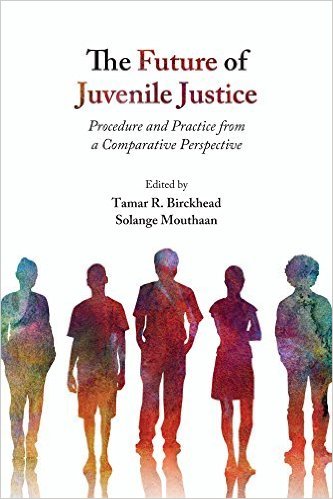 While juvenile justice system reformers and practitioners in the United States often focus on the nation’s diverse range of practice to identify ideas for system change, we less frequently examine other nations’ juvenile justice systems to ascertain best (or worst) practices.
While juvenile justice system reformers and practitioners in the United States often focus on the nation’s diverse range of practice to identify ideas for system change, we less frequently examine other nations’ juvenile justice systems to ascertain best (or worst) practices.
Though this is partly attributable to cultural differences and the variance in legal systems (e.g. adversarial versus inquisitorial), there is much to learn from colleagues across the globe as we strive to become more creative and effective advocates for young people.
“The Future of Juvenile Justice: Procedure and Practice From a Comparative Perspective” provides an accessible introduction to international viewpoints on contemporary juvenile justice. The book, a compilation of articles in which legal experts discuss varying juvenile justice issues, contains ample examples of common struggles in system implementation and reform.
These themes include: the difficulty of translating promising new legislation into actual practice on the ground, the complexities associated with standardizing juvenile justice strategies both within countries and across borders, and the overarching understanding that the system has a disproportionate and unfair impact on youth from disadvantaged economic situations and marginalized racial/ethnic groups. Though it is hardly heartening to know these challenges exist almost uniformly, it is helpful to read about how legislators and advocates in several countries have attempted to address each issue.
The book covers subjects ranging from general examinations of countries’ juvenile justice systems to specific critiques on solitary confinement and human trafficking law. Other than a brief look at India’s justice system, the articles focus on North American and European procedure and practice.
All the articles devote some time to solutions or at least specific suggestions for reform. However, it would be more helpful for readers, at least those reform-minded, if more of the authors emphasized the analysis of these strategies, rather than providing extensive descriptions of the country’s practice.
A few articles are particularly helpful to the American reader. Sayali Himanshu Bapat and Barbara Bennett Woodhouse present a piece comparing developments in the American, Indian and Italian juvenile justice systems. Following succinct sections contrasting the historical and present features of each country’s system, the authors persuasively posit that the United States requires a more coherent juvenile justice philosophy that crosses state lines in order to best serve youth in the system.
However, the authors are hardly suggesting that the Indian and Italian systems are sufficient. Ultimately, they propose that all three countries should regularly employ the Child Rights Based Transnational Framework of Justice to analyze whether the countries’ systems are truly treating youth who are within them, or at risk of entering them, with fairness and justice.
Tamar Birckhead provides a similarly instructive comparative analysis in her article on the solitary confinement of youth. Birckhead includes a thorough analysis of practices across the world, coming to the devastating yet mobilizing conclusion that solitary confinement of youth — a practice that has a debilitating, irreversible mental and physical impact — is permitted to some degree in all but two countries in the world. After surveying legal challenges that advocates have attempted in the United States and other countries, Birckhead offers practical yet powerful next steps that legislators, advocates and system practitioners must take to minimize, if not eradicate, the use of solitary confinement to punish youth.
Other countries’ practices may not always be helpful in addressing juvenile justice system practice and reform needs in the United States. But ignorance of international trends and solutions can detract from our ability to be effective advocates and dream up novel solutions. “The Future of Juvenile Justice” is a welcome addition to the bookshelf of any juvenile justice professional who embraces this spirit of curiosity and continual innovation.
Atasi Uppal is a staff attorney for the National Center for Youth Law (NCYL). Part of NCYL's Juvenile Justice and FosterEd teams, she leads program development and policy reform aimed at closing the achievement gap for young people in the juvenile justice system.
How can I get a copy of this book?